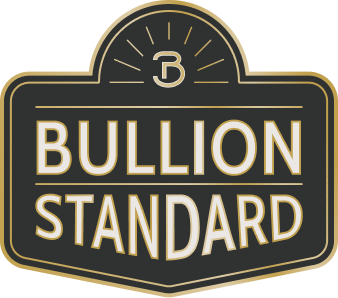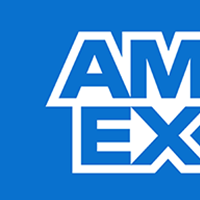1967 Quarter Value: Investment Guide and Rare Errors
By Bullion Standard ·
5 min read

Stack of banknotes and gold bars on a vibrant background, representing wealth, finance, and investment opportunities.
Discovering the Appeal of the 1967 Quarter: Its History and Investment Strategies
The 1967 quarter captures the interest of both collectors and investors, making it a noteworthy subject in the realm of numismatics and bullion investments. Minted during a period of significant change in U.S. coinage, it represents not just a utilitarian piece of currency, but a remnant of a transitional period marked by the Coinage Act of 1965. These quarters were minted without a mint mark, reflecting the era's shift away from silver in currency, which adds an intriguing aspect for those delving into its history. The 1967 quarter holds relevance today as enthusiasts seek pieces with historical importance, rare errors, and investment potential, highlighting its enduring appeal in the world of coin collecting and investing.
Key Factors That Elevate the 1967 Quarter's Value
- Mint State Value:
A 1967 quarter in mint state condition can hold substantial worth, often determined by its grade and overall appearance. Unlike common circulated coins, those in mint state are free from significant wear and damage. Factors such as luster, strike quality, and preservation play pivotal roles in valuation, often elevating such coins to the higher ends of the market. Coins that earn high grades from professional grading services are particularly prized, as they boast a flawless or nearly flawless condition.
- Rare Errors:
1967 quarters with known rare errors, such as double die varieties, can significantly enhance the coin's value. These minting errors, which result in duplicated or misaligned features, are keenly sought after by collectors. For example, a double die error might display a duplicate image of the date or other design elements, creating a unique variant that collectors are willing to pay premiums to acquire.
- No Mint Mark:
The absence of a mint mark on the 1967 quarter is a direct result of decisions made during the enactment of the Coinage Act of 1965. This act was part of a broader move to eliminate the use of silver in coins due to rising costs, and the omission of mint marks from 1965 to 1967 was intended to prevent hoarding of coins by collectors seeking mint-specific pieces. Despite its commonplace nature for this period, the lack of a mint mark remains a point of interest for numismatists examining the historical narratives of U.S. coinage.
- Value Determination:
The condition of a 1967 quarter profoundly impacts its value, as collectors favor coins that exhibit minimal wear, strong strikes, and radiant luster. The degree of preservation not only influences immediate market value but also its potential appreciation over time. Coins displaying poor preservation or visible wear tend to be valued closer to their face value, emphasizing the significance of maintaining coins in the best possible condition.
- Grading Considerations:
Obtaining a professional grading for a 1967 quarter can substantially enhance its marketability and investment value. Grading offers collectors and investors assurance regarding the coin’s authenticity and condition. It provides an unbiased assessment of its features, potentially boosting its desirability. As an investment, having a coin professionally graded can establish it as a credible and serious asset, with a higher likelihood of fetching premium prices.
Discover Rare and Valuable 1967 Quarters Making Headlines
Rare examples of the 1967 quarter have made a notable impact at auctions, occasionally fetching significant premiums due to unique qualities or mistakes. Take, for instance, a 1967 quarter discovered with a double die obverse, which brought much attention among collectors for its rarity. Such errors can render a seemingly ordinary coin into a treasure of considerable value, amplifying intrigue and competition among buyers. Another notable variant includes quarters with off-center strikes that create distinct and unusual appearances, enhancing their appeal and value.
.jpg)
Unveiling the Hidden Potential of the 1967 Quarter
The 1967 quarter stands as a compelling piece for numismatists and investors alike, encapsulating a unique era of American coinage. By understanding its minting history, recognizing rare errors, and considering factors affecting its condition and value, collectors can uncover the hidden potential these coins offer. As both a historical artifact and a prospective financial asset, the 1967 quarter provides opportunities for diversification within investment portfolios. We encourage readers to examine their collections for these subtle gems, as even ordinary-looking quarters may possess unseen value.
Frequently Asked Questions (FAQ)
1. What historical significance does the 1967 quarter hold that may influence its value for investors?
The 1967 quarter marks an era of coinage transition with no mint marks, reflecting changes from the Coinage Act of 1965, possibly adding historical interest for investors.
2. Are there specific minting years for quarters that are particularly sought after by collectors, like 1967?
Many collectors seek specific years with notable characteristics or errors, with the 1967 quarter being popular due to its lack of a mint mark.
3. How does the composition of the 1967 quarter compare to modern quarters, and what impact does this have on its bullion investment potential?
The 1967 quarter, composed of copper and nickel, lacks silver content, distinguishing it from pre-1965 quarters and limiting its bullion potential.
4. What is the process for authenticating rare errors on a 1967 quarter, and how does this affect its investment appeal?
Authentication involves professional coin grading services examining and certifying errors, enhancing the coin's rarity and market appeal.
5. How might fluctuations in silver prices impact the intrinsic and collectible value of a 1967 quarter for investors?
While the 1967 quarter has no silver, fluctuations in silver prices can indirectly influence collectible interest by shifting attention towards alternative numismatic investments.
Unearth More Opportunities with Bullion Standard
The 1967 quarter isn't just a relic of numismatic history; it's a hidden treasure waiting to be discovered. Whether you're a seasoned collector or a curious investor, these coins offer unique potential. If you are intrigued by the possibilities of rare coin investments, consider expanding your horizons with other precious metals as well. Visit our Bullion Standard homepage to explore our offerings and discover how we can help enhance and diversify your investment portfolio. Unleash the potential hidden in plain sight and redefine your investment strategy today.



.jpg)

















